Dehumidifier common questions
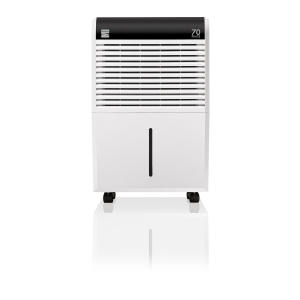

These common questions about dehumidifiers are the ones our experts hear the most often from our customers. You might also find the help you need by checking the common symptoms and solutions for dehumidifiers. When you’re ready to make a repair, search your model number to find replacement parts. Sears PartsDirect has the part you need, no matter where you bought your dehumidifier.
Why won't my dehumidifier start?
If your dehumidifier won’t start, first make sure the power cord is plugged in all the way. Then check the house circuit breaker for the dehumidifier outlet and reset the house circuit breaker if it has tripped. Empty the collection bucket if it’s full of water, because the dehumidifier will not start if the collection bucket is full.
Why won't my dehumidifier collect any water?
If your dehumidifier isn’t collecting water, adjust the target humidity level to the lowest setting (usually 30%). Also make sure the temperature in the space is at least 65 degrees, because some models of dehumidifiers won’t collect water if the space is too cold.
Why are the coils covered with ice?
Ice often collects on the dehumidifier’s evaporator coils when the room temperature is below 65 degrees. The dehumidifier goes into defrost mode when ice builds up on the coils. If ice builds up on the evaporator coils and the dehumidifier does not enter the defrost mode, then the evaporator thermistor may not be properly sensing the ice build-up. Replace the evaporator thermistor if it is defective.
How do I clean my dehumidifier?
Remove the air filter and clean it or replace it according to the instructions in your owner's manual. Remove the bucket and clean it thoroughly with mild detergent and water. Dust the dehumidifier cabinet with a damp cloth. Vacuum the grill using the vacuum’s brush attachment.
How do I connect a drain hose to my dehumidifier?
Follow the instructions in your owner's manual to connect a drain hose to the dehumidifier. Most models require that you install a drain hose adapter at the back of the dehumidifier to route water through the drain hose instead of into the collection bucket. Connect the drain hose to the adapter. Position the drain hose to properly dispose of the collection water to the basement sump or outside your home.
Why is water leaking on the floor?
If the dehumidifier leaks, make sure the collection bucket is in the right position and doesn’t have a crack in it. If your dehumidifier has a drain hose, check that the drain hose adapter is properly inserted in the dehumidifier and the drain hose is securely connected to the drain hose adapter. Check the drain hose for holes.
Why doesn’t my dehumidifier remove humidity?
After you first plug in the dehumidifier, give it 3 to 4 days to reach and maintain the humidity level you set. If it still isn’t removing humidity, adjust the settings to the lowest humidity level. Make sure the dehumidifier has the correct capacity for the space being dehumidified.
What size dehumidifier do I need?
Dehumidifiers are rated according to the number of pints of water removed in 24 hours. Choose the dehumidifier size based on the size and humidity of the space you want to dehumidify. For example, a moderately damp 1,000 square-foot basement is likely to need a dehumidifier that can remove 100 pints of water.
Where should I put my dehumidifier?
Locate the dehumidifier in the most humid area, which usually is the basement. Position the dehumidifier at least 12 inches from walls to allow proper airflow through the dehumidifier.
How does a dehumidifier work?
A dehumidifier operates similar to an air conditioner. The dehumidifier fan pulls damp room air into the evaporator, where the air is rapidly cooled and the moisture in the air condenses on the fins of the evaporator. The dry air flows out of the evaporator and back into the room. The water collected on the evaporator fins drips into the collection bucket or the drain hose for disposal.
How do I add refrigerant to my dehumidifier?
Adding refrigerant to your dehumidifier is not a do-it-yourself repair. Recovery and recharge of air conditioner refrigerant is tightly regulated by the Environmental Protection Agency (EPA). Only an EPA-licensed technician should recover, repair and recharge a sealed refrigerant system in your dehumidifier.
Most common symptoms to help you fix your dehumidifiers
Choose a symptom to see related dehumidifier repairs.
Main causes: dehumidifier too small for the space, bad humidity sensor, faulty evaporator thermistor, low refrigerant, b…
Main causes: clogged drain hose, drain hose not properly connected…
Main causes: lack of electrical power, wiring failure, electronic control board failure, user interface control failure…
Main causes: room temperature below 65 degrees Fahrenheit, control system failure…
Main causes: weak or dead batteries, out of range, radio frequency interference…
Main causes: dirty air filter, clogged grill, dehumidifier placed too close to the wall, dehumidifier too small for the …
Main causes: collection bucket not installed, collection bucket full of water…
Main causes: loose fan motor mounting screws, loose compressor mounting bracket screws, bad fan, faulty compressor…
Main causes: collection bucket not installed correctly, cracked collection bucket, loose drain hose connection…
Most common repair guides to help fix your dehumidifiers
These step-by-step repair guides will help you safely fix what’s broken on your dehumidifier.
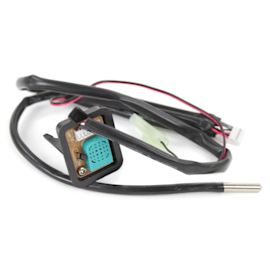
How to replace a dehumidifier sensor assembly
If the humidifier sensor doesn’t properly detect humidity or evaporator temperature, install a new sensor assembly, foll…
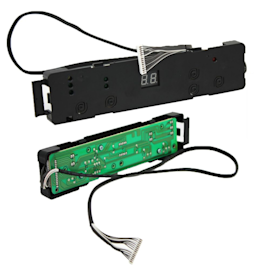
How to replace a dehumidifier user interface control board
If the dehumidifier doesn’t respond when you try to set it, follow these steps to replace it.…
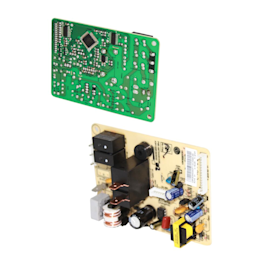
How to replace a dehumidifier electronic control board
If the dehumidifier won’t power up because the control board has failed, use the steps in this repair guide to replace t…
Effective articles & videos to help repair your dehumidifiers
Use the advice and tips in these articles to get the most out of your dehumidifier.
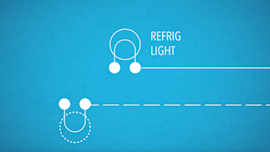
Learn some of the most common symbols found in a wiring diagram and what they mean.…
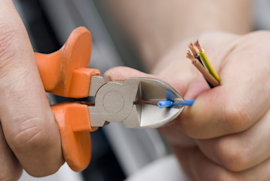
Learn how to repair broken, frayed or damaged wires in your appliances.…
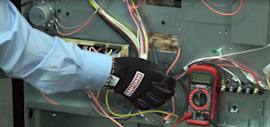
Learn how to use a multimeter to check for wiring problems in an appliance that's not working…
